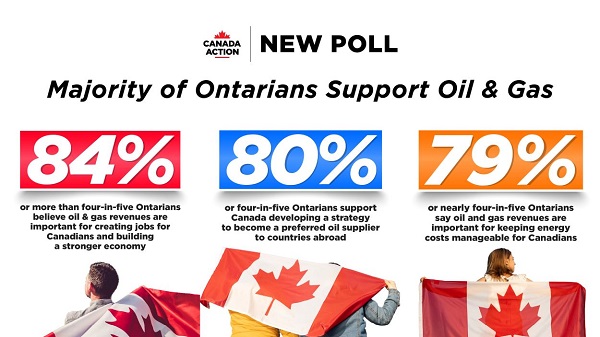Business
Judge allows Elon Musk’s ‘thermonuclear’ lawsuit against Media Matters to proceed

From LifeSiteNews
Elon Musk accuses Media Matters of manufacturing images to falsely accuse his social media platform X of putting advertisers next to Nazi content.
A federal judge has ruled that anti-woke, pro-free-speech tech mogul Elon Musk’s lawsuit against far-left Media Matters for America (MMFA) can proceed, keeping alive a “thermonuclear” challenge to the notorious organization’s practices that could set a major precedent.
Last November, Musk, the Tesla owner whose purchase of Twitter and transformation of it into X has upended left-wing activists’ monopoly on social media speech, filed a lawsuit against MMFA over an article it published accusing accusing Musk of having descended “into white nationalist and antisemitic conspiracy theories,” and “placing ads for major brands like Apple, Bravo (NBCUniversal), IBM, Oracle, and Xfinity (Comcast) next to content that touts Adolf Hitler and his Nazi Party.”
Musk responded that the article’s images were “manufactured” to create a false impression and “destroy” X. He vowed to launch a “thermonuclear lawsuit against Media Matters and ALL those who colluded in this fraudulent attack on our company,” promising to hold accountable the group’s’ “board, their donors, their network of dark money, all of them.”
On August 29, Bush-appointed U.S. District Court for the Northern District of Texas Judge Reed O’Connor rejected MMFA’s bid to have the suit dismissed.
“Plaintiff has provided sufficient allegations to survive dismissal,” he wrote. “Plaintiff has factually alleged: the existence of contracts subject to interference; intentional acts of interference; and proximate causation […] Plaintiff plausibly alleges that Defendants proximately caused their harm. Proximate cause requires proof of both cause-in-fact and foreseeability. Defendants present a compelling alternative version of events to Plaintiff’s. However, the Court will not ‘choose among competing inferences’ at this stage […] Accordingly, Plaintiff’s Amended Complaint alleges sufficient facts to state a claim of tortious interference with contract.”
Commenting on the ruling, George Washington University law professor Jonathan Turley wrote that “Musk’s lawsuit may be the most defining for our age of advocacy journalism” because it “directly challenges the ability of media outlets to create false narratives to advance a political agenda.”
“The complaint accuses Media Matters of running its manipulation to produce extremely unlikely pairings, such that one toxic match appeared for ‘only one viewer (out of more than 500 million) on all of X: Media Matters,’” Turley explained. “In other words, the organization wanted to write a hit piece connecting X to pro-Nazi material and proceeded to artificially create pairings between that material and corporate advertisements. It then ran the story as news.”
“Indeed, two defendant employees of Media Matters did not deny that they were aware of the alleged manipulation and that they were seeking to poison the well for advertisers in order to drain advertising revenues for X,” he added.
Media Matters describes its mission as “comprehensively monitoring, analyzing, and correcting conservative misinformation in the U.S. media,” but conservatives say its true mission is to demonize conservative voices and promote leftist narratives and misinformation. Leftist billionaire George Soros has supported the organization with millions in donations since its birth in 2004, though he did not go public with his support until 2010.
Media Matters founder David Brock has described the organization’s mission as “guerrilla warfare and sabotage” against Fox News but has long since branched out to other major outlets deemed out of step with the Left. It has also advocated censoring conservatives on social networks such as Facebook, to which Musk’s purchase and transformation of Twitter stands in opposition.
In 2021, Media Matters was one of multiple left-wing groups that took credit for pressuring Facebook to ban LifeSiteNews, based on false claims of “COVID-19 and vaccine disinformation.”
Business
Largest fraud in US history? Independent Journalist visits numerous daycare centres with no children, revealing massive scam

A young journalist has uncovered perhaps the largest fraud scheme in US history.
He certainly isn’t a polished reporter with many years of experience, but 23 year old independent journalist Nick Shirley seems to be getting the job done. Shirley has released an incredible video which appears to outline fraud after fraud after fraud in what appears to be a massive taxpayer funded scheme involving up to $9 Billion Dollars.
In one day of traveling around Minneapolis-St. Paul, Shirley appears to uncover over $100 million in fraudulent operations.
🚨 Here is the full 42 minutes of my crew and I exposing Minnesota fraud, this might be my most important work yet. We uncovered over $110,000,000 in ONE day. Like it and share it around like wildfire! Its time to hold these corrupt politicians and fraudsters accountable
We ALL… pic.twitter.com/E3Penx2o7a
— Nick shirley (@nickshirleyy) December 26, 2025
Business
“Magnitude cannot be overstated”: Minnesota aid scam may reach $9 billion

Federal prosecutors say Minnesota’s exploding social-services fraud scandal may now rival nearly the entire economy of Somalia, with as much as $9 billion allegedly stolen from taxpayer-funded programs in what authorities describe as industrial-scale abuse that unfolded largely under the watch of Democrat Gov. Tim Walz. The staggering new estimate is almost nine times higher than the roughly $1 billion figure previously suspected and amounts to about half of the $18 billion in federal funds routed through Minnesota-run social-services programs since 2018, according to prosecutors. “The magnitude cannot be overstated,” First Assistant U.S. Attorney Joe Thompson said Thursday, stressing that investigators are still uncovering massive schemes. “This is not a handful of bad actors. It’s staggering, industrial-scale fraud. Every day we look under a rock and find another $50 million fraud operation.”
Authorities say the alleged theft went far beyond routine overbilling. Dozens of defendants — the vast majority tied to Minnesota’s Somali community — are accused of creating sham businesses and nonprofits that claimed to provide housing assistance, food aid, or health-care services that never existed, then billing state programs backed by federal dollars. Thompson said the opportunity became so lucrative it attracted what he called “fraud tourism,” with out-of-state operators traveling to Minnesota to cash in. Charges announced Thursday against six more people bring the total number of defendants to 92.
BREAKING: First Assistant U.S. Attorney Joe Thompson revealed that 14 state Medicaid programs have cost Minnesota $18 billion since 2018, including more than $3.5 billion in 2024 alone.
Thompson stated, "Now, I'm sure everyone is wondering how much of this $18 billion was… pic.twitter.com/hCNDBuCTYH
— FOX 9 (@FOX9) December 18, 2025
Among the newly charged are Anthony Waddell Jefferson, 37, and Lester Brown, 53, who prosecutors say traveled from Philadelphia to Minnesota after spotting what they believed was easy money in the state’s housing assistance system. The pair allegedly embedded themselves in shelters and affordable-housing networks to pose as legitimate providers, then recruited relatives and associates to fabricate client notes. Prosecutors say they submitted about $3.5 million in false claims to the state’s Housing Stability Services Program for roughly 230 supposed clients.
Other cases show how deeply the alleged fraud penetrated Minnesota’s health-care programs. Abdinajib Hassan Yussuf, 27, is accused of setting up a bogus autism therapy nonprofit that paid parents to enroll children regardless of diagnosis, then billed the state for services never delivered, netting roughly $6 million. Another defendant, Asha Farhan Hassan, 28, allegedly participated in a separate autism scheme that generated $14 million in fraudulent reimbursements, while also pocketing nearly $500,000 through the notorious Feeding Our Future food-aid scandal. “Roughly two dozen Feeding Our Future defendants were getting money from autism clinics,” Thompson said. “That’s how we learned about the autism fraud.”
The broader scandal began to unravel in 2022 when Feeding Our Future collapsed under federal investigation, but prosecutors say only in recent months has the true scope of the alleged theft come into focus. Investigators allege large sums were wired overseas or spent on luxury vehicles and other high-end purchases. The revelations have fueled political fallout in Minnesota and prompted renewed federal scrutiny of immigration-linked fraud as well as criticism of state oversight failures. Walz, who is seeking re-election in 2026 after serving as Kamala Harris’ running mate in 2024, defended his administration Thursday, saying, “We will not tolerate fraud, and we will continue to work with federal partners to ensure fraud is stopped and fraudsters are caught.” Prosecutors, however, made clear the investigation is far from finished — and warned the final tally could climb even higher.
-

 Censorship Industrial Complex2 hours ago
Censorship Industrial Complex2 hours agoUS Under Secretary of State Slams UK and EU Over Online Speech Regulation, Announces Release of Files on Past Censorship Efforts
-

 Business5 hours ago
Business5 hours ago“Magnitude cannot be overstated”: Minnesota aid scam may reach $9 billion
-

 Alberta1 day ago
Alberta1 day agoAlberta project would be “the biggest carbon capture and storage project in the world”
-

 Energy1 day ago
Energy1 day agoNew Poll Shows Ontarians See Oil & Gas as Key to Jobs, Economy, and Trade
-

 Business1 day ago
Business1 day agoSocialism vs. Capitalism
-

 Energy23 hours ago
Energy23 hours agoCanada’s debate on energy levelled up in 2025
-

 Daily Caller19 hours ago
Daily Caller19 hours agoIs Ukraine Peace Deal Doomed Before Zelenskyy And Trump Even Meet At Mar-A-Lago?
-

 Energy2 days ago
Energy2 days agoWhile Western Nations Cling to Energy Transition, Pragmatic Nations Produce Energy and Wealth









